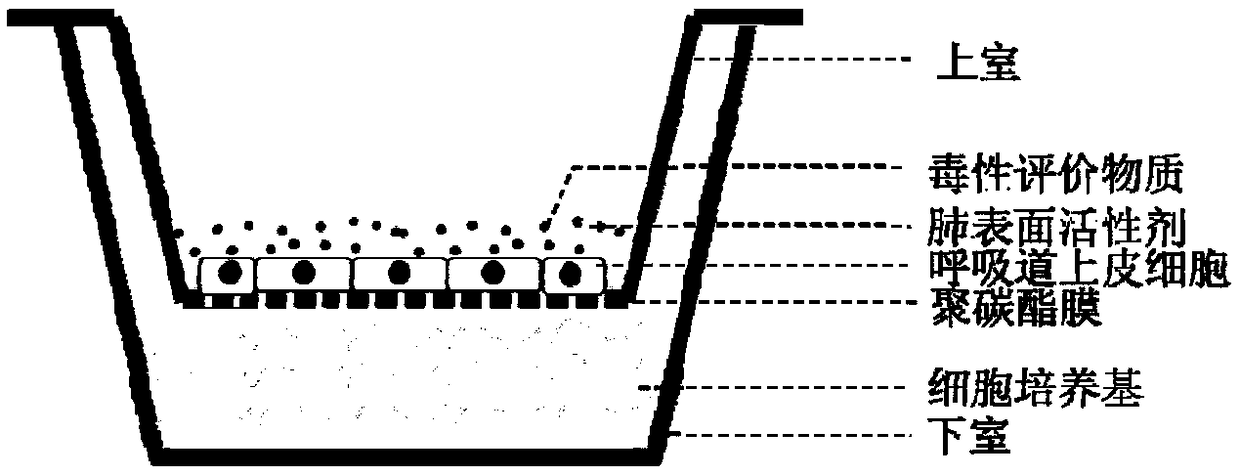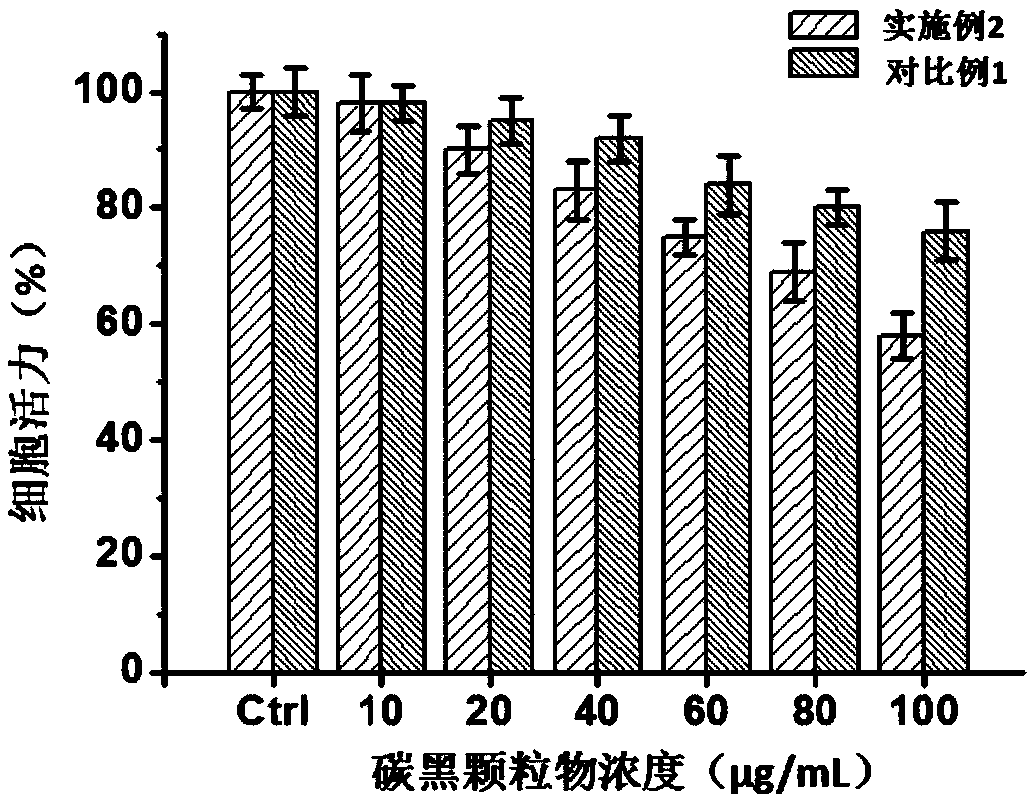Construction method and application of in-vitro respiratory exposure model
A construction method, external respiration technology, applied in artificial cell constructs, biochemical equipment and methods, epidermal cells/skin cells, etc. The method that can solve cytotoxicity cannot simulate the lungs well, and cannot simulate the lungs well To prevent lung collapse and maintain the balance of surface tension
- Summary
- Abstract
- Description
- Claims
- Application Information
AI Technical Summary
Problems solved by technology
Method used
Image
Examples
Embodiment 1
[0030] Human lung epithelial cells Beas-2B were cultured in vitro. After the cells grew to the logarithmic growth phase, the medium was removed, washed three times with phosphate buffer, and then digested with trypsin for 3 minutes. After digestion, add MEM medium containing fetal bovine serum to stop, add fresh medium after centrifugation and resuspend, according to 5×10 4 / cm 2 The cell density was inoculated onto the perforated membrane material in the upper chamber of the 3470 model co-cultivation system, and placed in the cell incubator to continue culturing for 24 hours;
[0031] Add 500 microliters of MEM cell culture medium containing fetal bovine serum to the lower chamber of the co-culture model, nest the upper chamber inoculated with the cells into the lower chamber, carefully aspirate the liquid in the upper chamber of the co-culture system, and then place it in the upper chamber Add 100 microliters of bovine lung surfactant and continue culturing for 12 hours;
...
Embodiment 2
[0034] Human lung epithelial cells 16HBE were cultured in vitro. After the cells grew to the logarithmic growth phase, the medium was removed, washed three times with phosphate buffer, and then digested with trypsin for 5 minutes. After digestion, add MEM medium containing fetal bovine serum to terminate, add fresh medium after centrifugation, and resuspend according to 1×10 5 The cell density was inoculated onto the perforated membrane material in the upper chamber of the 3491 model co-cultivation system, and placed in the cell incubator to continue culturing for 24 hours;
[0035]Add 500 microliters of MEM cell culture medium containing fetal calf serum to the lower chamber of the co-culture model, and nest the upper chamber where the cells were inoculated into the lower chamber; carefully aspirate the liquid in the upper chamber of the co-culture system, and then place it in the upper chamber Add 100 microliters of bovine lung surfactant and continue culturing for 12 hours;...
Embodiment 3
[0039] Human lung epithelial cells 16HBE were cultured in vitro. After the cells grew to the logarithmic growth phase, the medium was removed, washed three times with phosphate buffer, and then digested with trypsin for 5 minutes. After digestion, add MEM medium containing fetal bovine serum to terminate, add fresh medium after centrifugation, and resuspend according to 1×10 5 The cell density was inoculated onto the perforated membrane material in the upper chamber of the 3491 model co-cultivation system, and placed in the cell incubator to continue culturing for 24 hours;
[0040] Add 500 microliters of MEM cell culture medium containing fetal calf serum to the lower chamber of the co-culture model, and nest the upper chamber where the cells were inoculated into the lower chamber; carefully aspirate the liquid in the upper chamber of the co-culture system, and then place it in the upper chamber Add 100 microliters of bovine lung surfactant and continue culturing for 12 hours...
PUM
| Property | Measurement | Unit |
|---|---|---|
| pore size | aaaaa | aaaaa |
Abstract
Description
Claims
Application Information
 Login to View More
Login to View More - R&D
- Intellectual Property
- Life Sciences
- Materials
- Tech Scout
- Unparalleled Data Quality
- Higher Quality Content
- 60% Fewer Hallucinations
Browse by: Latest US Patents, China's latest patents, Technical Efficacy Thesaurus, Application Domain, Technology Topic, Popular Technical Reports.
© 2025 PatSnap. All rights reserved.Legal|Privacy policy|Modern Slavery Act Transparency Statement|Sitemap|About US| Contact US: help@patsnap.com



